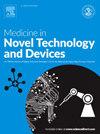Photothermal nanomaterials-based scaffolds for tissue regeneration and cancer therapy
Q3 Medicine
引用次数: 0
Abstract
Recently, photothermal therapy (PTT) has been considered a promising method for cancer treatment with fewer serious side effects compared to conventional radiation, chemotherapy and surgical resection. PTT is based on the photoconversion ability of photothermal agents (PTAs) as well as utilizes various nanomaterials (NMs) owing to their excellent photothermal properties. PTAs can penetrate tumor tissue, reduce local and systemic damage, and can be easily controlled. PTA-based composite scaffolds stimulate tissue reconstruction as well as regeneration following ablation of cancer cells, combining the advantages of photothermal NMs for maximum therapeutic efficacy with minimal side effects. Recently, hybrid PTAs as well as 3-dimensional scaffolds are being developed to maximize therapeutic efficacy along with minimal adverse effects, which make these composite scaffolds promising for biomedical applications. This review focuses on a detailed discussion on topics such as PTAs (i.e., organic polymer-based PTAs and inorganic PTAs) and PTT-mediated scaffolds for tissue regeneration such as PTA-based scaffolds, carbon NMs-based scaffolds, and gold NMs scaffolds, copper NMs-based scaffolds, iron NMs-based scaffolds, black phosphorus (BP)-based scaffolds, MXenes-based scaffolds and PTT-mediated scaffolds in cancer therapy.
用于组织再生和癌症治疗的光热纳米材料支架
近年来,光热疗法(PTT)被认为是一种很有前途的治疗癌症的方法,与传统的放疗、化疗和手术切除相比,其严重的副作用更少。PTT是基于光热剂(pta)的光转换能力,并利用各种纳米材料(NMs)由于其优异的光热性能。pta能穿透肿瘤组织,减少局部和全身损伤,易于控制。基于pta的复合支架刺激肿瘤细胞消融后的组织重建和再生,结合光热纳米材料的优点,以最大的治疗效果和最小的副作用。近年来,为了最大限度地提高治疗效果和减少不良反应,人们正在开发混合pta和三维支架,这使得这些复合支架在生物医学领域具有广阔的应用前景。本文综述了PTAs(即有机聚合物基PTAs和无机PTAs)和ptt介导的组织再生支架,如pta基支架、碳纳米颗粒基支架、金纳米颗粒基支架、铜纳米颗粒基支架、铁纳米颗粒基支架、黑磷(BP)基支架、mxenes基支架和ptt介导的肿瘤治疗支架等。
本文章由计算机程序翻译,如有差异,请以英文原文为准。
求助全文
约1分钟内获得全文
求助全文
来源期刊

Medicine in Novel Technology and Devices
Medicine-Medicine (miscellaneous)
CiteScore
3.00
自引率
0.00%
发文量
74
审稿时长
64 days
 求助内容:
求助内容: 应助结果提醒方式:
应助结果提醒方式:


